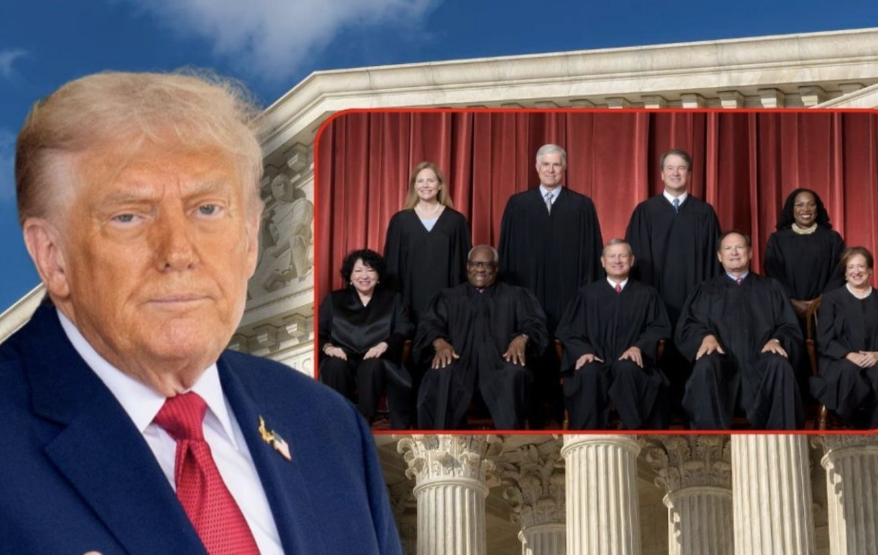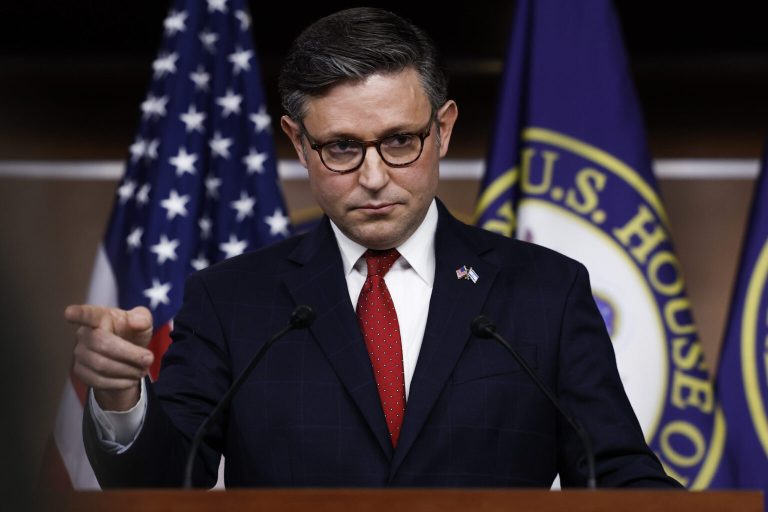The Supreme Court issued a consequential ruling that reshapes the enforcement and administration of a major federal immigration program. By lifting a lower court injunction that had restricted the program, the Court effectively sided with the federal administration, restoring its authority to determine eligibility and legal protections for hundreds of thousands of migrants residing in the country. The ruling was decided 8–1, with Justice Ketanji Brown Jackson casting the sole dissent.
The lower court injunction had prevented the administration from modifying or ending certain protections for program participants. Solicitor General John Sauer argued before the Court that the lower court had overstepped its authority, restricting the executive branch’s discretion in managing sensitive policy decisions, including those involving foreign affairs. The Supreme Court’s decision reaffirmed that the executive branch possesses substantial latitude in implementing and adjusting federal programs, particularly those involving complex policy judgments and resource allocation.
The ruling highlights the Court’s longstanding principle that federal courts should exercise caution when intervening in matters deemed highly discretionary by the executive branch. By lifting the injunction, the Court allowed the administration to manage its program according to its policy priorities. Legal analysts suggest that the ruling may influence how lower courts approach challenges to executive actions in other domains, signaling a willingness to defer to executive judgment in cases involving broad policy discretion.
Justice Jackson’s dissent emphasized the immediate human impact of the ruling. The dissent highlighted the risks posed to vulnerable populations whose legal status could be abruptly affected by changes to the program. In her view, the Court’s decision placed administrative authority above the protection of individuals who rely on stable legal recognition to maintain work, housing, and access to basic services. While the majority ruling affirmed executive discretion, the dissent underscored the Court’s role in considering the human consequences of judicial decisions.
The ruling has broader implications for federal governance. By affirming executive authority in this context, the Court clarified the scope of judicial oversight in cases where courts are asked to second-guess administrative decisions that are inherently policy-driven. Experts note that the decision may serve as a precedent in future litigation involving challenges to federal programs where discretion and policy judgment play a central role.
The decision also demonstrates the interplay between law and policy. Federal programs, especially those that impact large populations, require flexibility to adapt to changing circumstances. The Court’s ruling reflects an acknowledgment that rigid judicial intervention can impede the ability of administrative agencies to respond effectively to evolving challenges. Legal scholars suggest that this deference to the executive branch is consistent with prior decisions affirming the separation of powers and the unique competencies of administrative agencies in managing complex programs.
Observers have noted that the ruling sets an important benchmark for evaluating the limits of judicial intervention. Courts have long grappled with the tension between ensuring accountability in government action and respecting the expertise and discretion of the executive branch. By siding with the administration, the Supreme Court emphasized the importance of maintaining a functional balance between oversight and operational flexibility in federal governance.
The case also illustrates the Court’s approach to discretion and deference. When federal programs involve nuanced policy considerations, courts are generally reluctant to impose blanket restrictions that could undermine the program’s effectiveness. In this instance, the Court concluded that the lower court’s injunction imposed an undue limitation on the executive’s capacity to manage the program, potentially hampering the administration’s ability to fulfill its statutory and policy objectives.
The broader legal community has interpreted the decision as a reaffirmation of the principle that executive agencies, acting within statutory authority, should be trusted to make informed decisions on policy matters. While dissenting opinions continue to highlight the risks of such deference, the majority ruling establishes a clear standard regarding the appropriate scope of judicial intervention in cases involving complex federal programs.
For program participants, the ruling restores a measure of stability, allowing them to continue receiving the protections and benefits that the program affords. However, the dissenting opinion reminds policymakers and the public that legal decisions of this magnitude carry tangible consequences for individuals whose lives and livelihoods are affected by administrative actions. The tension between effective governance and individual protection remains central to ongoing debates about the role of courts in overseeing executive programs.
Legal analysts also point to the ruling’s potential influence on future litigation involving executive authority. Cases that challenge administrative actions on the grounds of fairness, transparency, or procedural adequacy may now be evaluated in light of the Court’s reaffirmation of discretion and deference. This may encourage federal agencies to adopt carefully documented procedures and robust justifications for programmatic changes to withstand potential judicial scrutiny.
The decision underscores the Court’s engagement with fundamental questions about the separation of powers. By limiting the scope of lower court intervention, the ruling emphasizes that the judiciary’s role is to review the legality of executive action, not to micromanage the policy decisions of elected officials and their appointed agencies. This approach preserves the ability of the executive branch to act decisively, particularly in areas such as immigration, where rapid response and policy adaptation are often required.
Furthermore, the ruling has implications for public administration beyond immigration. The principles articulated by the Court may guide judicial review in other policy areas where discretion, expertise, and operational judgment are critical to effective governance. Analysts suggest that the decision may embolden agencies to implement programs with confidence that courts will defer to their expertise, provided that statutory authority is respected and procedures are properly followed.
At the same time, Justice Jackson’s dissent serves as a reminder that judicial deference is not absolute. Courts remain attentive to the human and legal consequences of executive action, ensuring that discretion does not become unchecked authority. The dissent reflects a concern for the balance between administrative flexibility and the protection of individuals whose legal rights and protections depend on the stability of federal programs.
The ruling also contributes to ongoing discourse about the role of the judiciary in modern governance. As federal programs increasingly affect large populations and encompass complex administrative frameworks, the Court’s guidance clarifies the boundaries of judicial involvement. By articulating the principles that govern deference to executive discretion, the decision helps define the interplay between law, policy, and human impact in contemporary federal administration.
In practical terms, the decision allows the federal administration to proceed with its program without court-imposed restrictions, restoring the authority to determine eligibility criteria, enforce program regulations, and adjust protections in accordance with administrative priorities. Legal commentators have emphasized that the ruling signals a reaffirmation of the judiciary’s limited role in policy-driven matters and reinforces the expectation that courts respect the expertise of administrative agencies.
Ultimately, the Supreme Court’s ruling reflects a nuanced understanding of governance, law, and discretion. By an 8–1 vote, the Court sided with the administration, confirming that federal agencies retain substantial authority to manage programs within their statutory remit. The decision balances the need for effective governance with the judiciary’s responsibility to safeguard legal and procedural norms, while simultaneously acknowledging the real-world implications for individuals affected by administrative actions.
This ruling will likely resonate in ongoing and future cases involving executive discretion, judicial review, and the management of complex federal programs. It demonstrates the Court’s role in defining the limits of judicial intervention while underscoring the broader principles of separation of powers, deference, and responsible administration. As agencies implement the program without restrictions, the decision marks a significant affirmation of executive authority, signaling the Court’s approach to balancing discretion, legality, and human impact in the administration of federal law.

Emily Johnson is a critically acclaimed essayist and novelist known for her thought-provoking works centered on feminism, women’s rights, and modern relationships. Born and raised in Portland, Oregon, Emily grew up with a deep love of books, often spending her afternoons at her local library. She went on to study literature and gender studies at UCLA, where she became deeply involved in activism and began publishing essays in campus journals. Her debut essay collection, Voices Unbound, struck a chord with readers nationwide for its fearless exploration of gender dynamics, identity, and the challenges faced by women in contemporary society. Emily later transitioned into fiction, writing novels that balance compelling storytelling with social commentary. Her protagonists are often strong, multidimensional women navigating love, ambition, and the struggles of everyday life, making her a favorite among readers who crave authentic, relatable narratives. Critics praise her ability to merge personal intimacy with universal themes. Off the page, Emily is an advocate for women in publishing, leading workshops that encourage young female writers to embrace their voices. She lives in Seattle with her partner and two rescue cats, where she continues to write, teach, and inspire a new generation of storytellers.









